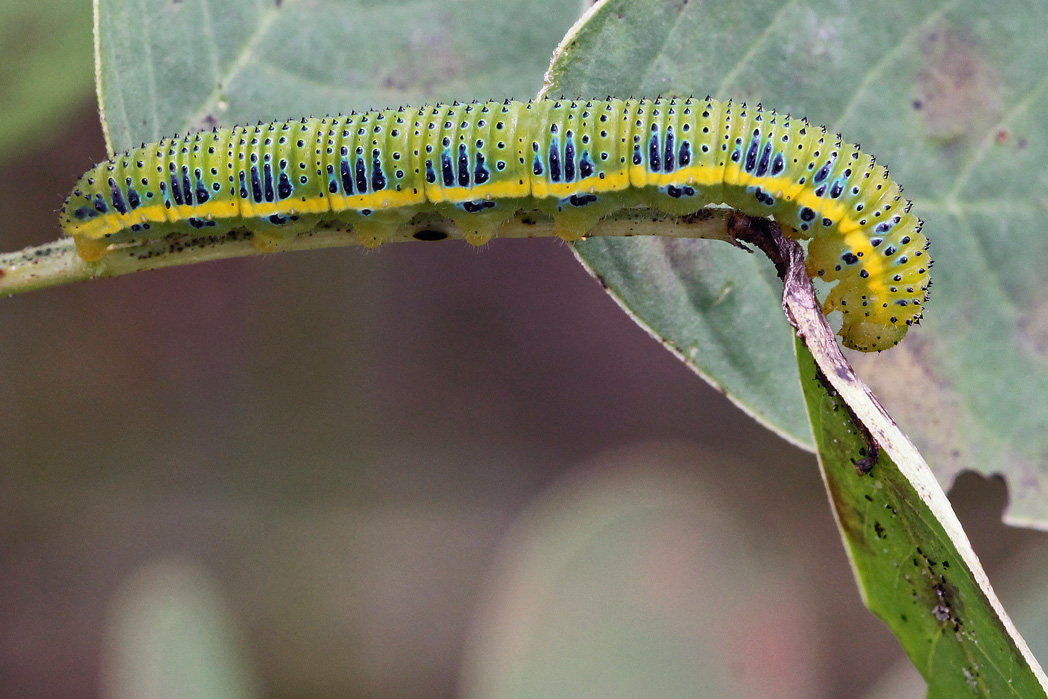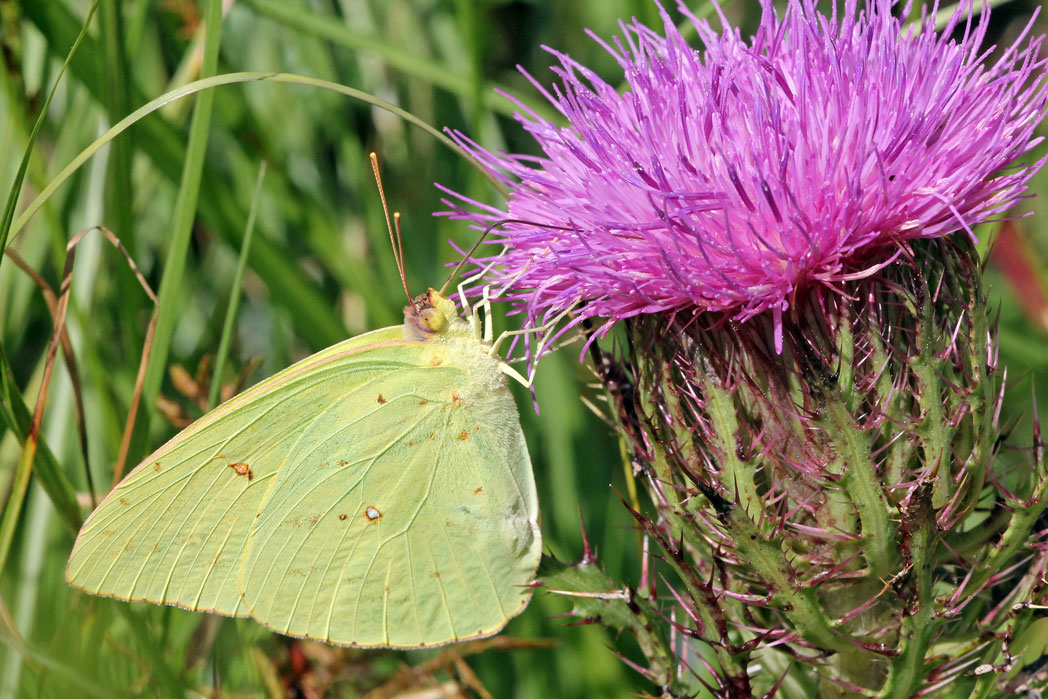Cloudless sulphur
“Know your native pollinators” is a series of articles that will help you identify and appreciate Florida’s varied pollinators, including bees, wasps, butterflies, moths, beetles, flies, birds and bats. Pictured above: Cloudless sulphur on Purple thistle (Cirsium horridulum) by Mary Keim.
Keep your eyes open for Cloudless sulphur butterflies! Monarchs aren’t the only ones migrating this time of year. Fall is a wonderful time to see the Cloudless sulphurs in flight on their southern migration.
CLASSIFICATION
Order: Lepidoptera
Family: Pieridae
Subfamily: Coliadinae
Genus species: Phoebis sennae
FORAGING PREFERENCES
Larval host plants for the Cloudless sulphur include plants in the pea family (Fabaceae) such as Florida Keys sensitive pea (Chamaecrista deeringiana), Maryland wild sensitive plant (Senna marilandica), Narrowpod sensitivepea (Chamaecrista lineata var. keyensis), Partridge pea (Chamaecrista fasciculata), Privet wild sensitive plant (Senna ligustrina), Sensitive pea (Chamaecrista nictitans) and Chapman’s wild sensitive plant (Senna mexicana var. chapmanii).
The butterflies have long tongues so they can extract nectar from tubular flowers. They prefer red flowers such as Scarletcreeper (Ipomoea hederifolia) and Tropical sage (Salvia coccinea).
IDENTIFICATION
Cloudless sulphurs are among our most common butterflies. They are bright yellow, although summer females may be pale yellow or white. Other distinguishing features of females are the narrow black border on the wings and the dark spot in the middle of the front wing. Winter males are larger and darker than the females. The wingspan of the Cloudless sulphur ranges from 4.8 to 6.5 cm.
HABITAT
The Cloudless sulphur can be found year-round in Argentina, the West Indies and the southern United States (southern Texas to the Southeast), but migrating populations may extend all the way to Colorado, New Jersey or even Canada during the summer months. The Cloudless sulphur’s large fall migration is often compared to the migration of the Monarch butterfly in both time of year and number of migrating butterflies. Adults that survive the winter will return north to their summer breeding grounds in the spring.
In warmer winters, Cloudless sulphurs can overwinter as far as 100 miles north of Gainesville. They cannot survive in temperatures below 20 degrees Fahrenheit, however. Most eastern Cloudless sulphurs will migrate south of Gainesville, but not as far south as Lake Okeechobee. A sharp decline in this migrating population was recorded between 1984 and 2000. The decrease is thought to be related to reduced soybean crops and increased herbicide use in the Southeast.
This butterfly breeds in disturbed open areas where host and nectar plants are present. When migrating, they can be found in all types of habitats. Adults like to roost on yellow or red leaves. This might help them blend in to protect them from predators.

The caterpillar is green with yellow lateral lines, blue patches and small blue dots. Photo by Mary Keim.
LIFE CYCLE
Eggs are laid singly. They are cream colored and will turn to orange with time. The larva of the Cloudless sulphur is green with yellow lateral lines, blue patches and bands of small blue spots with black bristles (setae). These larvae do not create a shelter as some other butterfly larvae do. They feed on foliage, buds and flowers. Pupae hang vertically attached to a silk pad. They may be either green or pink with yellow lines.
References:
- Hall, Donald W. and Thomas J. Walker. “Common name: cloudless sulphur, scientific name: Phoebis sennae (Linnaeus) (Insecta: Lepidoptera: Pieridae: Coliadinae).” Featured Creatures. University of Florida. March 2016.
- Lotts, Kelly and Thomas Naberhaus, coordinators. 2017. Butterflies and Moths of North America. 2019.
- UF IFAS University of Florida. “Cloudless Sulphur Butterfly.” Gardening Solutions. Center for Landscape Conservation and Ecology. December 2018.

